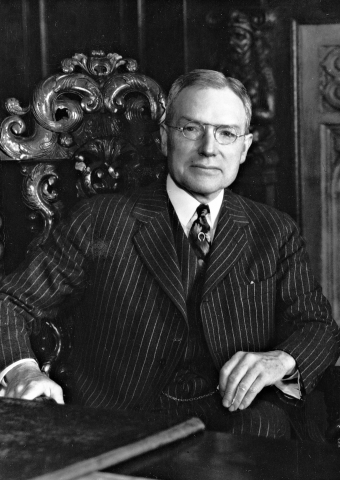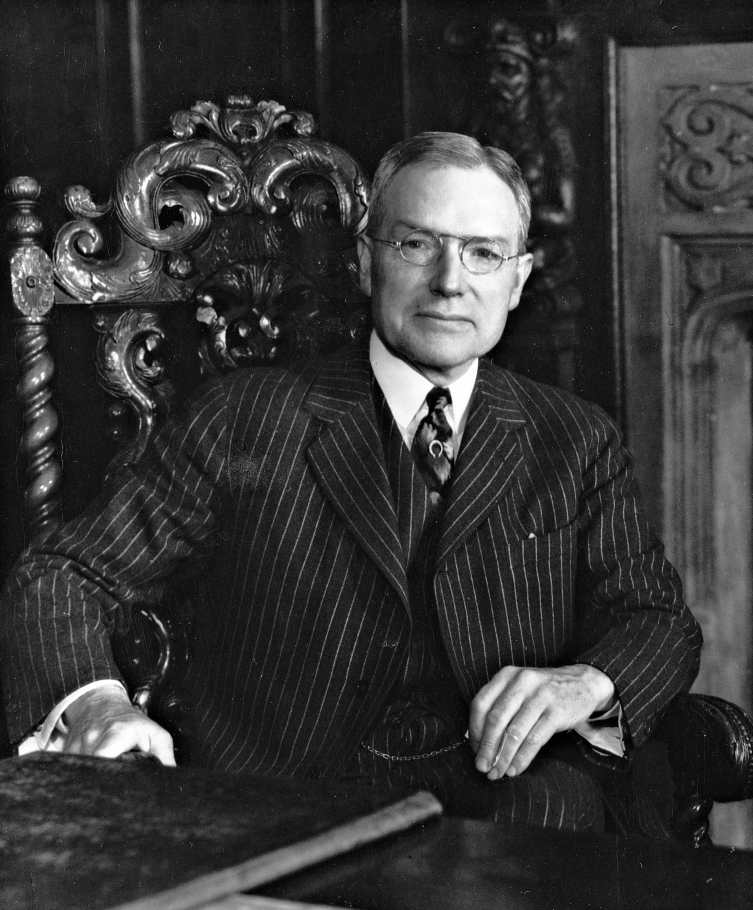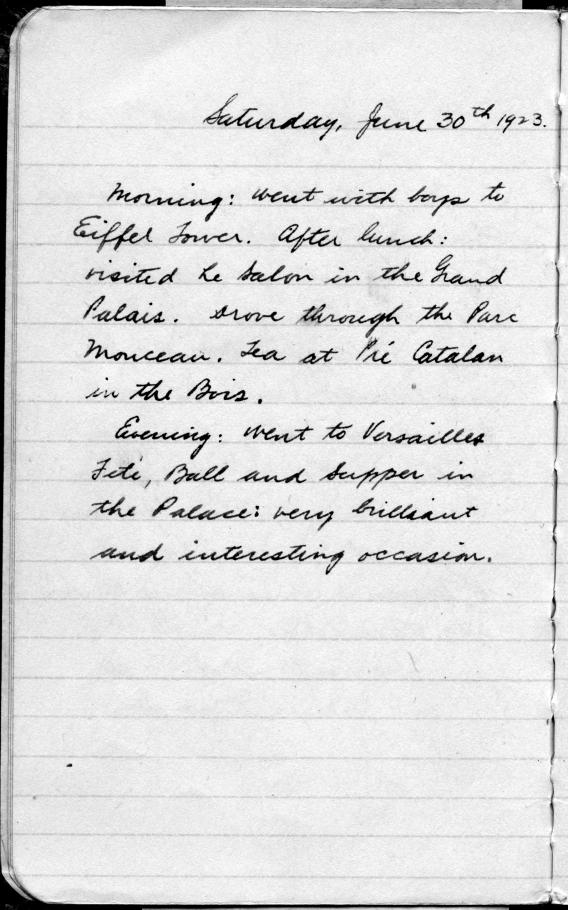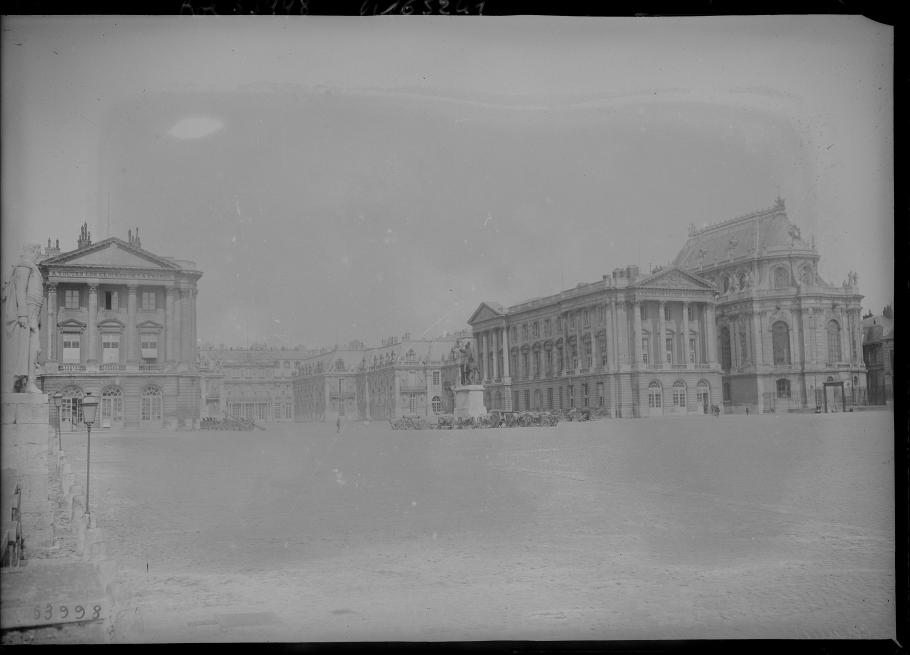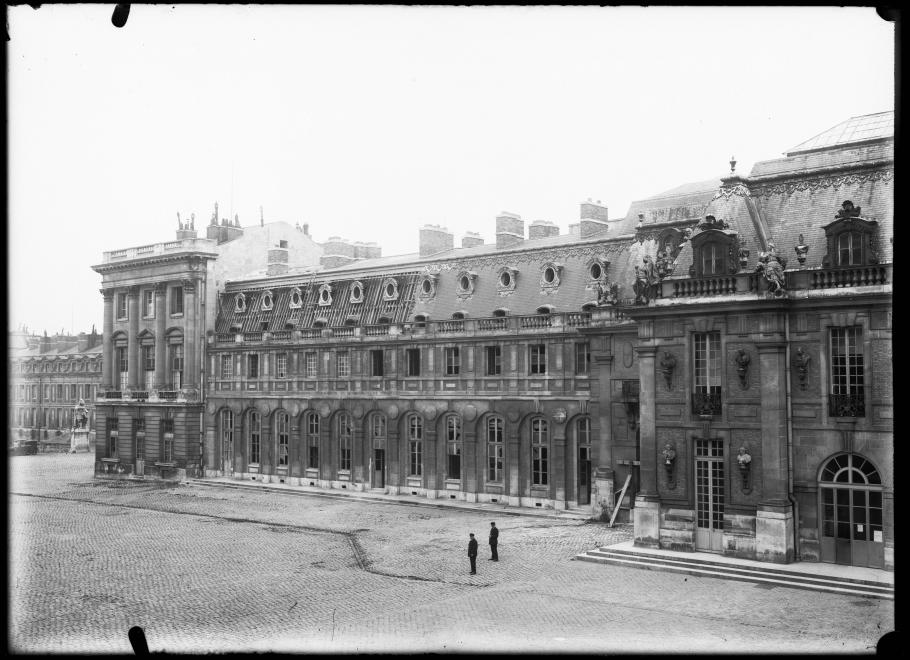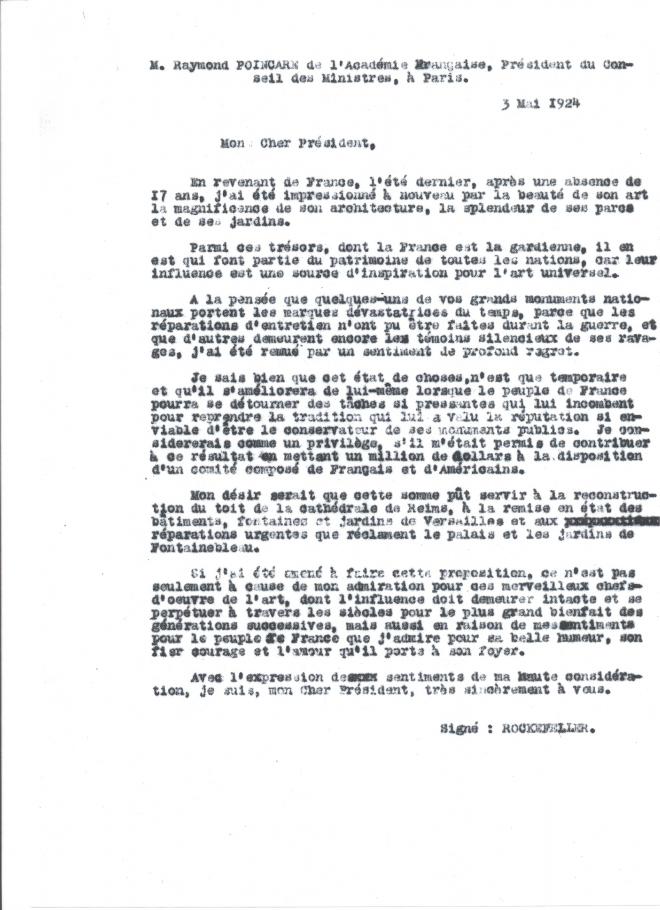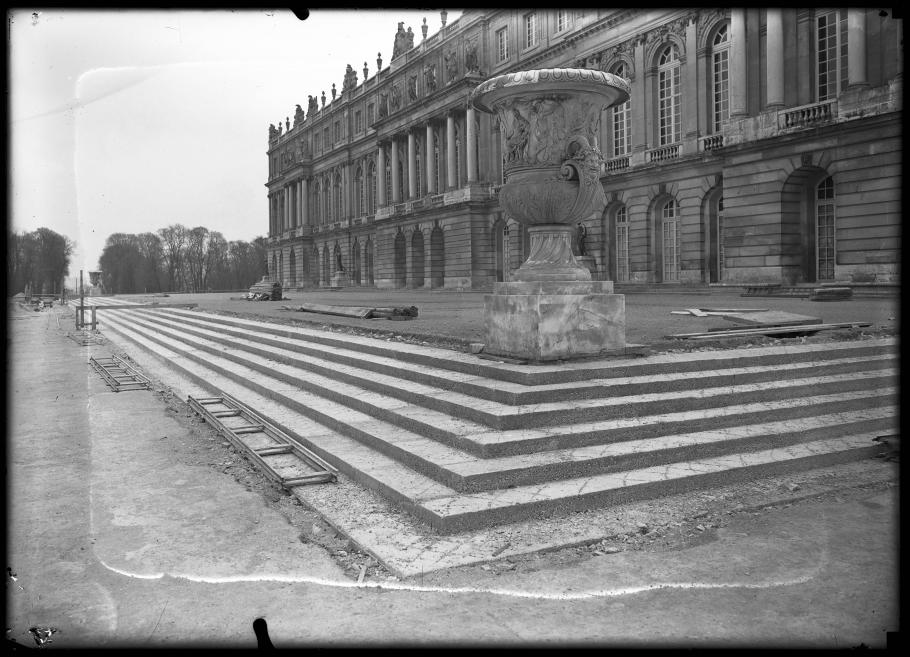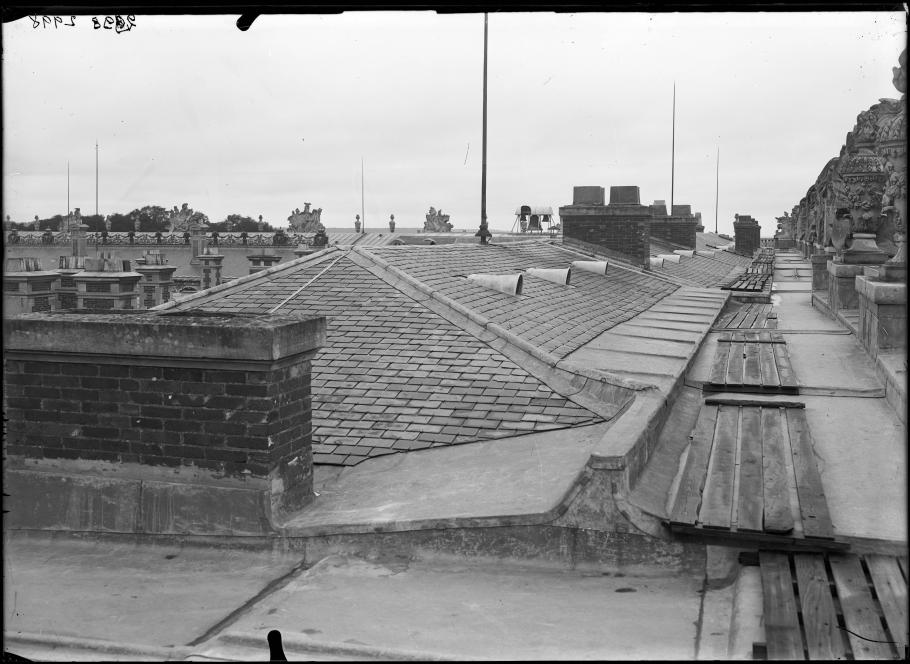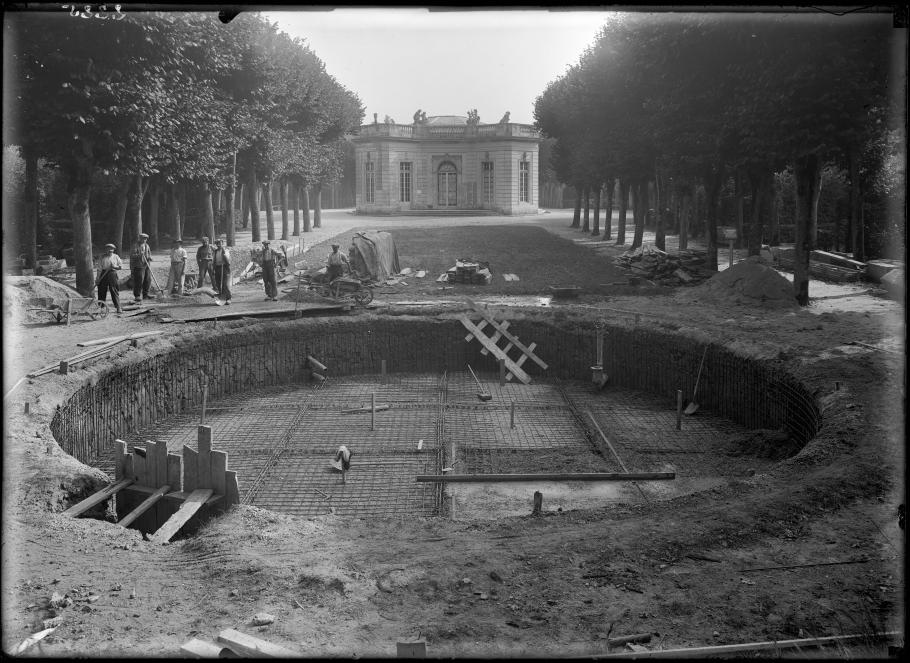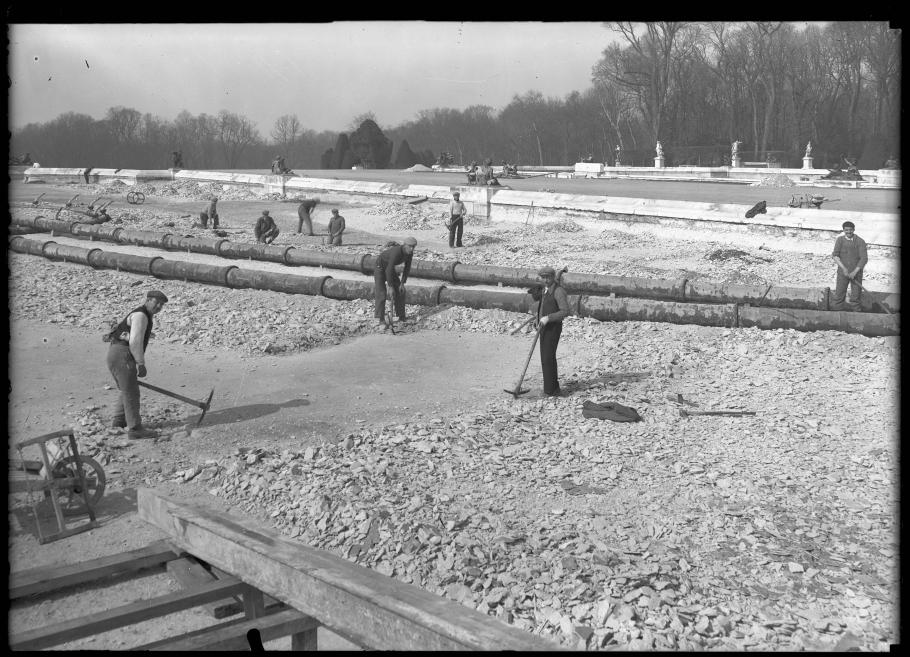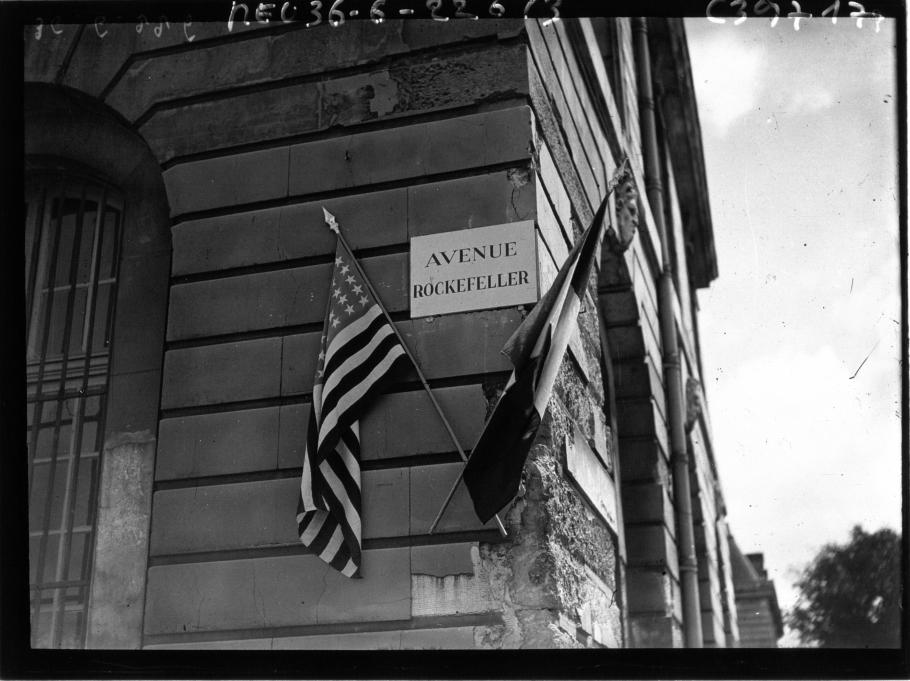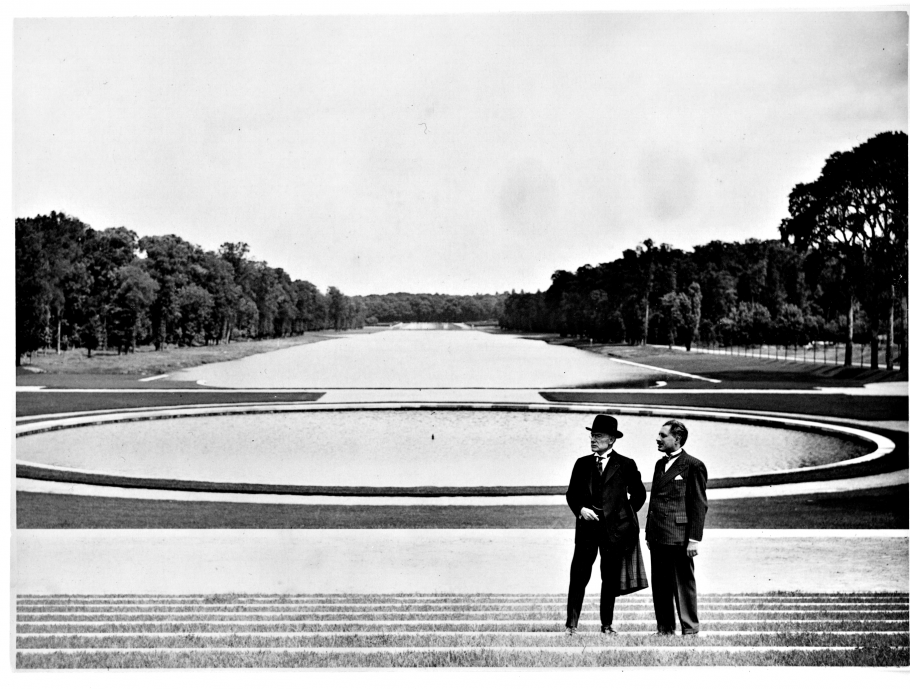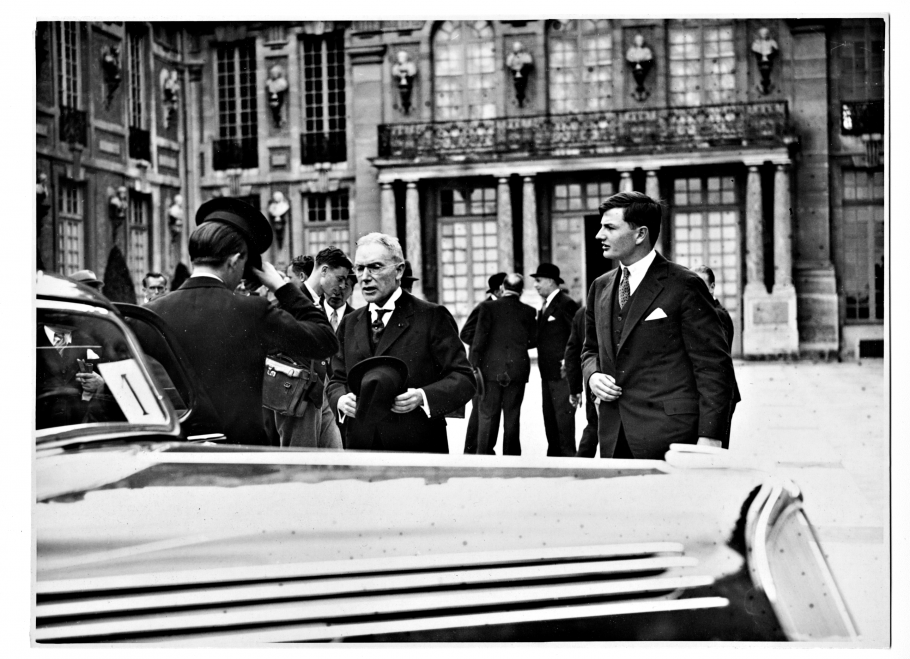John D. Rockefeller Jr was the only son of John Davison Rockefeller (1839-1937), founder of the Standard Oil Company. A businessman, John D. Rockefeller Jr is equally well known for his philanthropy, both in the United States and Europe. His regular travels to the latter meant he was well aware of the state of dilapidation of Europe’s monuments in the wake of the First World War.
Versailles, “France’s international treasure”
The Palace of Versailles emerged weakened from the First World War . The departure of many of its employees for the front, harsh winters and the privations of wartime had changed the habits of the visiting public, who deserted it in droves. The Palace made a triumphant return to the political stage on 28 June 1919, when it welcomed the plenipotentiaries of the Allies and Germany to the Hall of Mirrors for the signing of the Treaty of Versailles. Once this international event was over, however, the Palace of Versailles struggled to attract the visitor numbers it had enjoyed in previous years. Gradually, the Estate of Versailles fell into disrepair.
On 30 June 1923, John D. Rockefeller and his wife Abby attended a party organised at the Palace of Versailles to raise funds for the restoration of the Estate. The philanthropist was shocked to discover the historic royal residence in critical condition, with its statues showing the weight of the years, its parquet floors in a state of collapse, its gilding losing its lustre...
Unlike his father and the other American billionaires of the time, John D. Rockefeller had a keen interest in art and beauty. His tastes led him to France, where he developed a deep affection for the country’s heritage. In 1923, he confided to the then President of the Republic, Raymond Poincaré: “I have once again been captivated by the beauty of [France’s] art, the splendour of its architecture and the bountifulness of its parks and gardens”. Moreover, Rockefeller considered the Palace of Versailles to be international rather than national heritage. Consequently, an effort had to be made to preserve it, so that this historic palace could continue to draw the admiration of and inspire the whole world.
The donations
In 1924, John D. Rockefeller Jr sent a letter to the then President of the French Republic, Raymond Poincaré, outlining his intention to provide France with financial assistance to the value of a million dollars – 20 million francs – for the restoration of various elements of the country’s heritage. He wrote: “I would consider it a privilege to be able to contribute to this aim by making 1 million dollars available”. Of the 20 million francs, 10 million were allocated to restoring the Estate of Versailles. Raymond Poincaré – a member of the Society of Friends of Versailles since 1913 – was only too aware of the precarious condition of the Estate of Versailles and therefore lost no time in accepting the American philanthropist’s proposal.
Rockefeller sought a way of paying the funds to the French State that would give him sufficient control over how his donations were administered. A special body, called the “Franco-American Committee for the Restoration of Monuments”, was subsequently created. The five members of the Committee – all of whom had a particular interest in heritage and cultural matters – were chosen by Rockefeller and appointed by Poincaré. The Committee was chaired by Jean-Jules Jusserand, who had retired from his role as French ambassador to the USA. The architect William Welles Bosworth acted as general secretary, and the banker Harjes as treasurer. The other two members were Gabriel Hanotaux – a former minister of foreign affairs – and Maurice Paléologue – a former French ambassador and, since 1920, president of the Society of Friends of Versailles. The programme of works drawn up by the Palace’s head architects and approved by the Commission for Historic Monuments was submitted to the Franco-American Committee for approval.
Within a year of his first visit, work began on the Palace of Versailles, under the direction of head architect, Benjamin Chaussemiche, who adhered to the philanthropist’s wishes by starting with functional repairs, which, although not necessarily obvious to the public, were required in order to preserve the building. Rockefeller’s donation was therefore used to repair leaking roofs and to restore the external features and roof timbers. On the roofs, in particular, the original materials were replaced with more robust alternatives – for example, lead was installed instead of slate.
In 1927, three years after his initial donation, John D. Rockefeller Jr offered assistance to the French government again, this time in the form of 40 million francs to preserve French heritage, with 23 million earmarked exclusively for the Estate of Versailles. This second donation was used to restore the Grove of the Domes, the Ballroom Grove, the Queen’s Hamlet, which was severely damaged, and the Grand Trianon. Thus, new life was breathed into the leafy walkways of Versailles’ Park.
France’s acknowledgement
In 1936, more than ten years after his first donation, John Rockefeller Jr and his wife were invited by the French government to attend the opening of the avenue named in their honour: Rockefeller Avenue, which borders the Palace of Versailles. The French government was represented by Minister Jean Zay and acknowledged and applauded the philanthropic gesture of the American patron. Commenting on the day, the Rockefellers said that “every detail was perfectly executed and it couldn't have been more delightful or charming”.
Rockefeller's commitment, which was seen from the start as a one-off temporary form of assistance to cover the post-war period, galvanised the State into action: in 1924, the National Assembly voted to allocate 4 million francs a year exclusively to the Estate of Versailles. This sum was increased to 5 million francs a year in 1932.
The Rockefeller name had become forever linked to the history of the Palace. John D. Rockefeller Jr’s commitment paved the way for the subsequent generation to continue this philanthropic exercise. In 1954, the Rockefeller Brothers Fund announced a donation of 100 million francs to restore the Queen’s Hamlet, the Petit Trianon and the French Pavilion. More than that, Rockefeller's commitment was behind the establishment of a network of patrons who admired the Palace as much as the American’s philanthropy.
This trend continues today thanks to The American Friends of Versailles, who have been upholding the tradition of American generosity towards the Palace since 1998.



